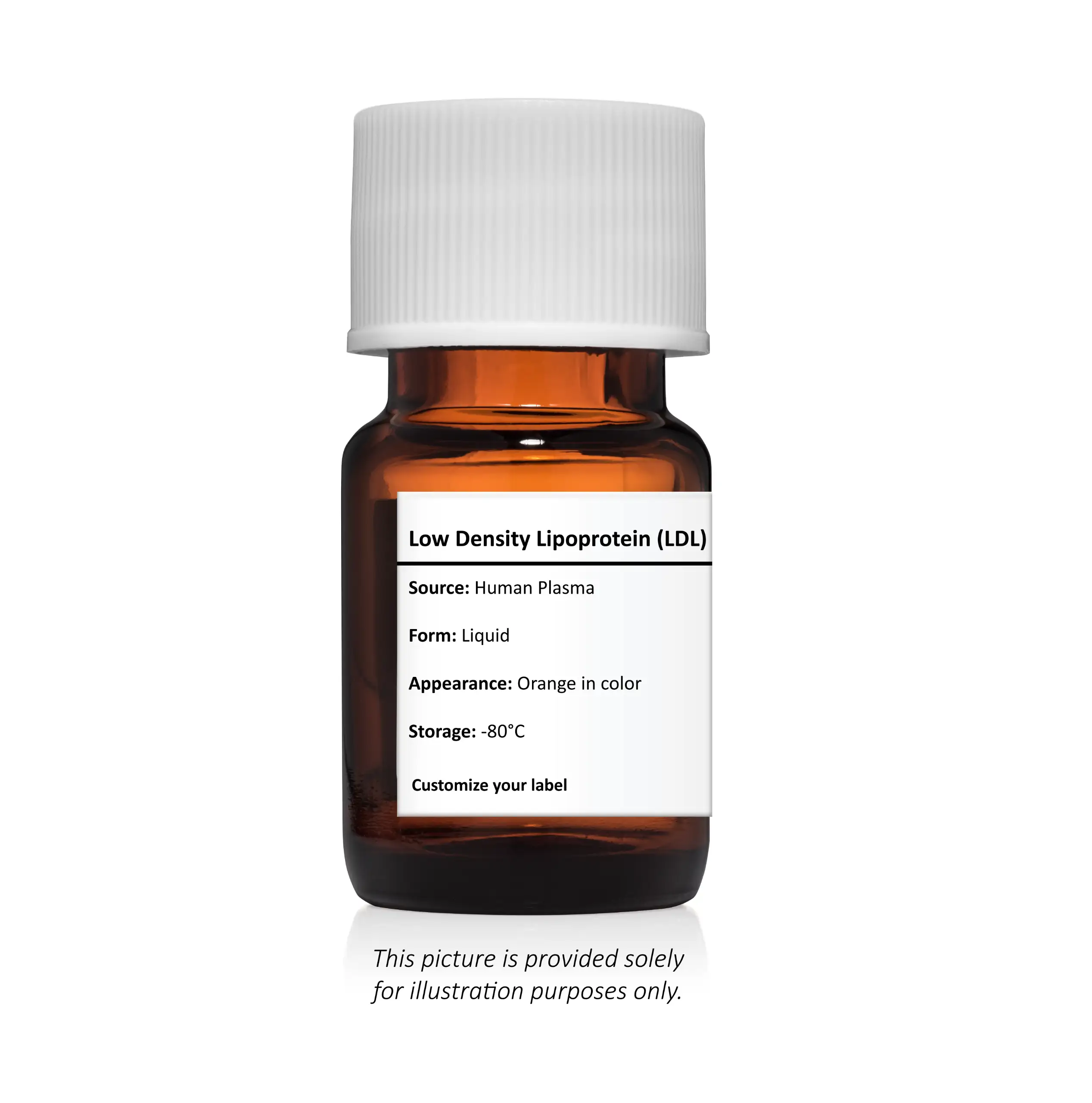Low Density Lipoprotein (LDL)
LDL is a lipoprotein that transports lipid molecules throughout the body via blood circulation.
| Product Specifications | |
|---|---|
| Source | Human Plasma |
| Form | Liquid |
| Buffer | In sucrose and sodium chloride |
| Concentration | ≥3,000 mg/dL |
| Purity | By Sebia Hydrasys Electrophoresis |
| Assay | Assay performed on Roche Cobas C501 |
| Storage | -80°C |
| Molecular Weight | 2.75 million kDa |
| Appearance | Orange in color |

Having high levels of LDL can lead to atherosclerosis, which increases the risk for a heart attack or stroke. This is why it is often referred to as the “bad cholesterol”. According to Mayo Clinic, if a person is at no risk/does not have a heart disease, then the optimal concentration for LDL is 100-129 mg/dL. However, if someone is at risk or has heart disease, then the optimal concentration is 100 mg/Dl or below. Some easy ways to keep the concentration low as to help prevent plaque buildup is to eat healthier, exercise, and not smoke. Some examples of things to help dieting is limiting saturated fats and eliminating trans fats.
